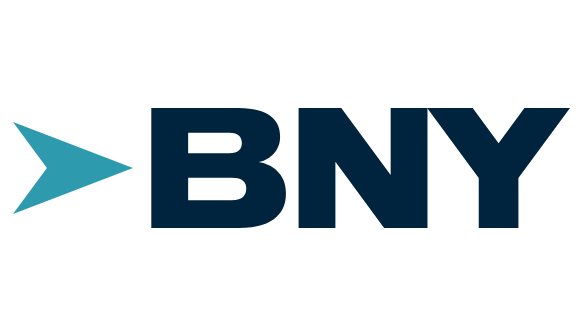In May 2024, securities settlement in the United States, Canada and Mexico will move from two days to one (T+2 to T+1). While the move will, in theory, reduce counterparty and market risk and lower margin requirements, it will have a significant knock-on effect on the global foreign exchange markets (FX). Jason Vitale, Global Head of Foreign Exchange, Fixed Income, Equities and Capital Markets at BNY Mellon, examines the implications and the readiness of the market ahead of this transformative shift.
In the rush to prepare for the introduction of T+1 in North America, much of the market’s focus has understandably gone toward managing the securities settlement element, as well as the upcoming requirement for affirmations. But there is another important piece of the puzzle that must not be overlooked: FX settlement.
For investors located outside the U.S. – in particular, those in Asia Pacific and Europe – the move to compress settlement cycles for the U.S. equity markets is prompting a reassessment, and possibly even a complete revision, of the entire currency trading process. This is because the updated settlement timelines simply no longer align with the established frameworks and cut-off times that need to be factored in for different time zones. Effectively, by being ahead in terms of the time of day, the U.S. moving to T+1 creates an increasingly smaller window for settlement the further east you are.
Unfortunately, like the tortoise racing the hare, this challenge has come from behind to sneak up on the industry – and the scramble is on to catch up, both in terms of understanding the impact and finding effective ways to mitigate it. Though many had hoped the Securities Exchange Commission (SEC) would extend the impending deadline to provide the market with some much-needed respite to adapt to the unanticipated FX impacts, this possibility has come and gone. It means that the reality is this: Investors across Asia and Europe, regardless of the size or type of firm, will need to have performed a front-to-back assessment of their workflow to understand how the change will impact the FX funding process, and adjust accordingly.
The challenge explained
Today, a foreign investor looking to purchase U.S. securities would first need to get their hands on the U.S. dollars needed to fund the transaction. To do this, the investor trades its local currency for the purchase amount in U.S. dollars. As the settlement of the transaction is dependent on this funding component, if the FX settlement does not occur on time, there is a chance the trade will fail. While this is not a concern in the current T+2 environment, as the industry moves to T+1, late FX settlement will become a more common occurrence. Given that 19.6% of securities and 16% of the equity market are materially owned outside of the U.S.,1 this is an issue that needs to be addressed as a matter of urgency to avoid massive disruption to masses of trade transactions.
Picture the scene: you are a fund manager in London looking to purchase U.S. equities. As has been typical, you look to execute at market close in the U.S. (4 p.m. EST/9 p.m. London), with the intention of sorting the FX component to fund the trade the following morning. When you wake up the next day – now T+1 – you have plenty of time to determine the amount of U.S. dollar funding you need. Once confirmed, you wait to execute your FX trade at market close in London (4 p.m. London/11 a.m. EST), with the intention of making use of the deep pool of liquidity available at this time. While this approach is common practice under T+2, under T+1 it will simply no longer be viable. For the trade to settle under T+1, the manager in this example would have to move the execution of the FX element forward – either by waking up early in the morning to place the order or by looking to trade on T+0.
For Asia-based investors, the consequences are even more pronounced. With the Hong Kong market closing before the U.S. market even opens, T+1 in the U.S. effectively translates close to or on T+0. Another thing to consider is that, if T+1 falls on a public holiday in Asia or Europe that is not celebrated in the U.S., FX settlement would not be possible as the non-U.S. market would be closed.
Compounding the challenge, Continuous Linked Settlement (CLS) – the multicurrency settlement system that ensures both sides of an FX trade get paid – is not making operational changes to accommodate T+1. As a result, in a T+1 world, once trades are executed at market close in the U.S., managers will only have an additional two hours before the CLS cut off. The ability to settle within this window is currently limited – and could mean that investors in Asia and Europe have to settle outside of CLS which, in turn, introduces significant settlement risks.
The fundamental challenge that ties this together is that the globe keeps spinning – and cut-off times do not wait. If foreign investors do not look to make a change, they risk facing high overdraft charges to cover the funding component – or even settlement fails where this option is not available.
T+1: Late for a Very Important Date?
As markets adjust to the reality of one-day securities settlement in North America, what FX and funding complications could laggards face? And what systemic risks are market participants worried about if settlement fails rise?
Identify a T+1 action plan
Despite the urgency, at the beginning of 2024, 30% of investors had still not investigated how T+1 would impact their FX settlement.2 This is either due to a lack of awareness or because some are adopting a “wait and see” approach. In the case of the latter, there is little to be gained. Failure to adapt to the new normal in time will likely result in more trade fails or, at the very least, high and unwanted overdraft charges to cover the missing funding component. However, there is still a slim window of opportunity for preparation.
For investors that do not have a U.S. location and typically trade with CLS, there is a need to thoroughly scrutinize the front-to-back funding workflows. This proactive approach will be essential for identifying areas that require adjustment or enhancement to ensure seamless operations in the new settlement landscape. Having done this, what options are on the table that will allow foreign investors to most effectively navigate T+1?
- Prefunding is one. This would mean prepurchasing U.S. dollars based on an “informed guess” as to how much would be needed to buy the equities, then adjusting based on the actual needs once known. While this will solve T+1 funding needs, it will introduce significant portfolio drag – and investors will end up with funds sitting idle in their accounts while they wait for their equities trade to come through.
- Another possibility is setting up an operation in the U.S. This tackles the challenge head on, but the costs associated with securing legal compliance approval, obtaining the necessary licenses and securing appropriate infrastructure and staffing are prohibitively high for the majority of investors. Moreover, it is unlikely to be achievable ahead of the deadline.
- The final option – and the one that requires the least heavy lifting for investors – is to leave the FX execution with the custodian. A custodian is uniquely positioned to aggregate equity executions and work out funding requirements and support with efficient FX execution and settlement. To achieve this, they receive standing instructions – i.e., preagreed arrangements from their clients – that allow them to perform the FX execution needed to purchase securities on a fully automated basis.
While this solution has been around for some time, many custodians are extending their cut-off times for this type of FX execution to meet the new demands of T+1 and support clients by giving them more time to execute. If your custodian does not offer this service, there are fintech workflow solutions that offer a similar package. Certain custodians, such as BNY Mellon, have also opened up their standing instruction solution to non-custody clients, so that they can offer programmatic and systematic FX execution and settlement for assets held in custody outside of the bank.
T+1: transition and readiness
Resources including key insights, frequently asked questions and news relating to the transition to T+1.
The new FX settlement journey
On the final stretch, it is critical that investors evaluate their workflows and make the necessary structural changes and investments to handle FX settlement in the new order. Regardless of the chosen route forward – be it prefunding, a longer-term plan to move to the U.S. or leveraging custodian or fintech partners – the time to decide is now.
And while the focus today should be on meeting the requirements of the imminent T+1 deadline, this is very much only the beginning of the journey toward the future of settlements. Indeed, from the planned move to T+1 in Europe and Asia to the much-talked about ambition to ultimately transition to T+0, the direction of the market is clear: faster settlement times are on their way.
Against this backdrop it is imperative for stakeholders to recognize and engage with the challenges on the road ahead, such that they can proactively implement future-proof solutions to support the evolving landscape.
1. FX considerations for T+1 U.S. securities settlement. (May 2023). Global Financial Markets Association. https://www.gfma.org/wp-content/uploads/2023/05/gfxd-fx-considerations-for-t1-u.s-securities-settlement-may23-003.pdf
2. Operationalizing T+1 in January 2024. (January 2024). The Value Exchange. https://thevx.io/wp-content/uploads/2024/02/ValueExchange_T1-Pulse-January-2024_Key-Findings_final-for-public-release.pdf
BNY Mellon is the corporate brand of The Bank of New York Mellon Corporation and may be used to reference the corporation as a whole and/or its various subsidiaries generally. This material does not constitute a recommendation by BNY Mellon of any kind. The information herein is not intended to provide tax, legal, investment, accounting, financial or other professional advice on any matter, and should not be used or relied upon as such. The views expressed within this material are those of the contributors and not necessarily those of BNY Mellon. BNY Mellon has not independently verified the information contained in this material and makes no representation as to the accuracy, completeness, timeliness, merchantability or fitness for a specific purpose of the information provided in this material. BNY Mellon assumes no direct or consequential liability for any errors in or reliance upon this material.
BNY Mellon will not be responsible for updating any information contained within this material and opinions and information contained herein are subject to change without notice. BNY Mellon assumes no direct or consequential liability for any errors in or reliance upon this material. This material may not be reproduced or disseminated in any form without the prior written permission of BNY Mellon. Trademarks, logos and other intellectual property marks belong to their respective owners.
© 2024 The Bank of New York Mellon Corporation. All rights reserved.






